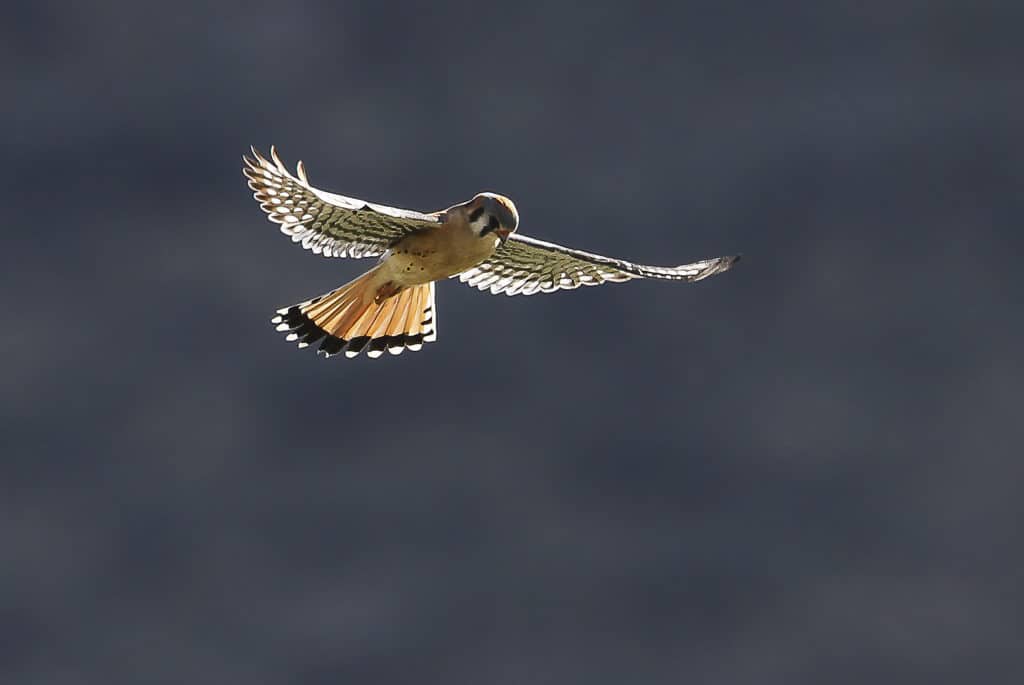Creature Feature
The Disappearing American Kestrel
By Wayne Bierbaum
The most colorful predatory bird in North America is the American kestrel. The males have blue and reddish-orange colors with spots and bars. They are the smallest falcon, the size of a mourning dove, and are dramatic in flight. Their best move is hovering almost motionless over one spot, barely moving their wings. They are one of my favorite birds to find but are very wary of humans and therefore difficult to photograph.
They used to be known as the sparrow hawk, although they tend to catch more insects and mice than birds. When I see kestrels migrating through Cape May, N.J., they are frequently eating grasshoppers or dragonflies as they fly by.
They are cavity-nesting birds and return to their nest year after year. They have two to four offspring and spend most of the summer teaching them how to hunt. Kestrels have trouble hunting in the snow and each fall, most migrate south. Many of the migrating birds will end up spending winter in Maryland. As I drive along county roads this time of year, I frequently see them on power lines.
Over the last 10 years they have become more and more scarce. On one particular Eastern Shore road, five years ago, I would see six kestrels on one trip. Over the last three months and six trips, I have seen a total of two.
American kestrels range over most of the continental U.S. and have recently extended their range to southern Canada. The population seems to be stable in the West and Midwest but in the eastern U.S. the birds have had a noticeable 10 to 15% decline. Although this matches an overall decline in large hawks and owls, the cause is thought to be different.
All raptors are affected by habitat loss but the larger birds are more affected by ingesting rodent poison. It is suggested that kestrels are more sensitive to human encroachment and insecticides. They do not seem to tolerate humans. The birds may become poisoned by insecticides because insects are their major food source. Their numbers improve when nesting boxes are placed near a meadow.
A couple of kestrels would spend the winter near Sandy Point Park and also in the Deale area. They are usually found around large open isolated fields. Keep an eye out for them.
Hopefully, if we become less dependent on insecticides, kestrels will make a comeback. If you have a large field, a kestrel nesting box would be an interesting thing to put up because a screech owl may use it if a kestrel doesn’t. Find instructions at https://www.audubon.org/

